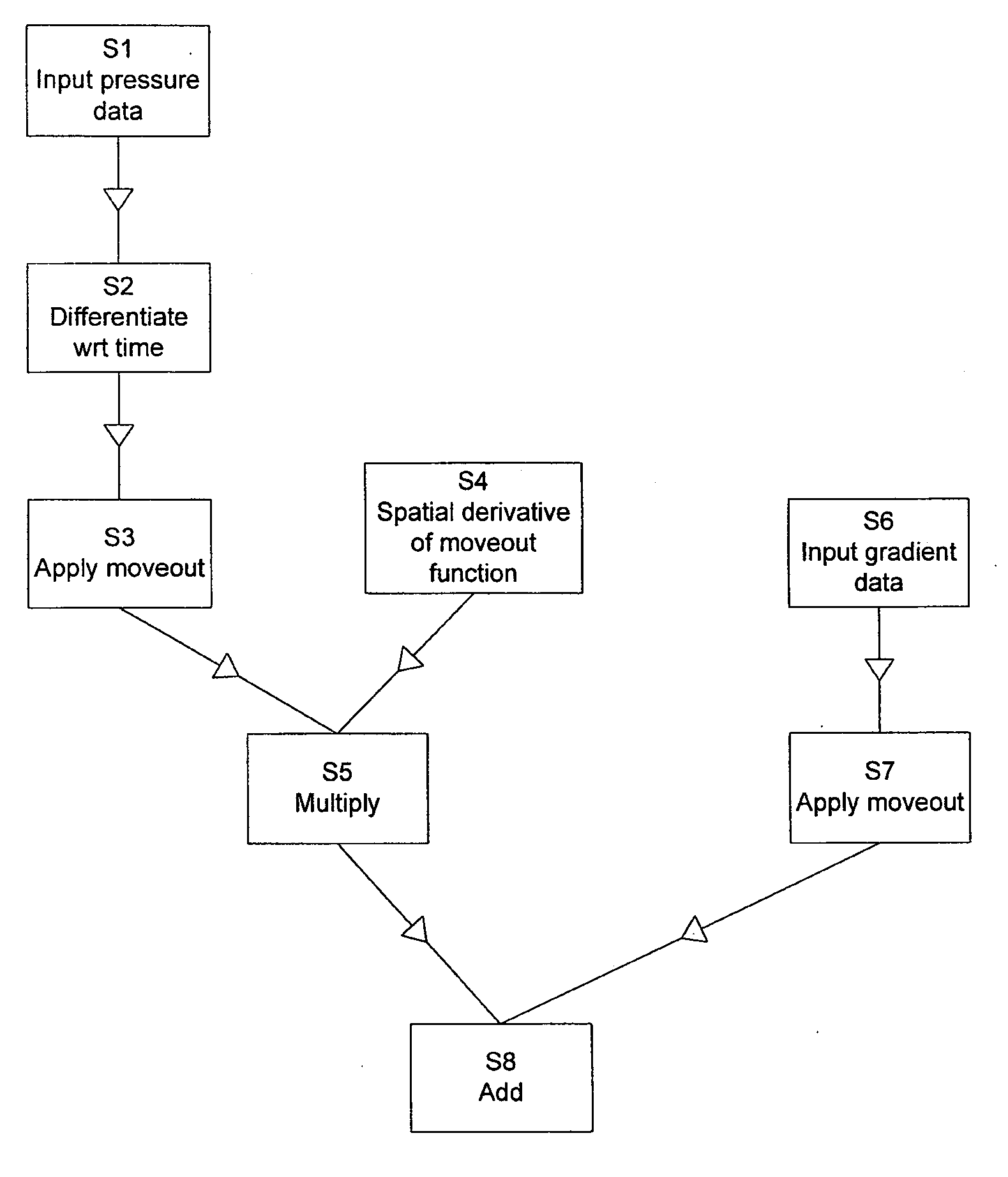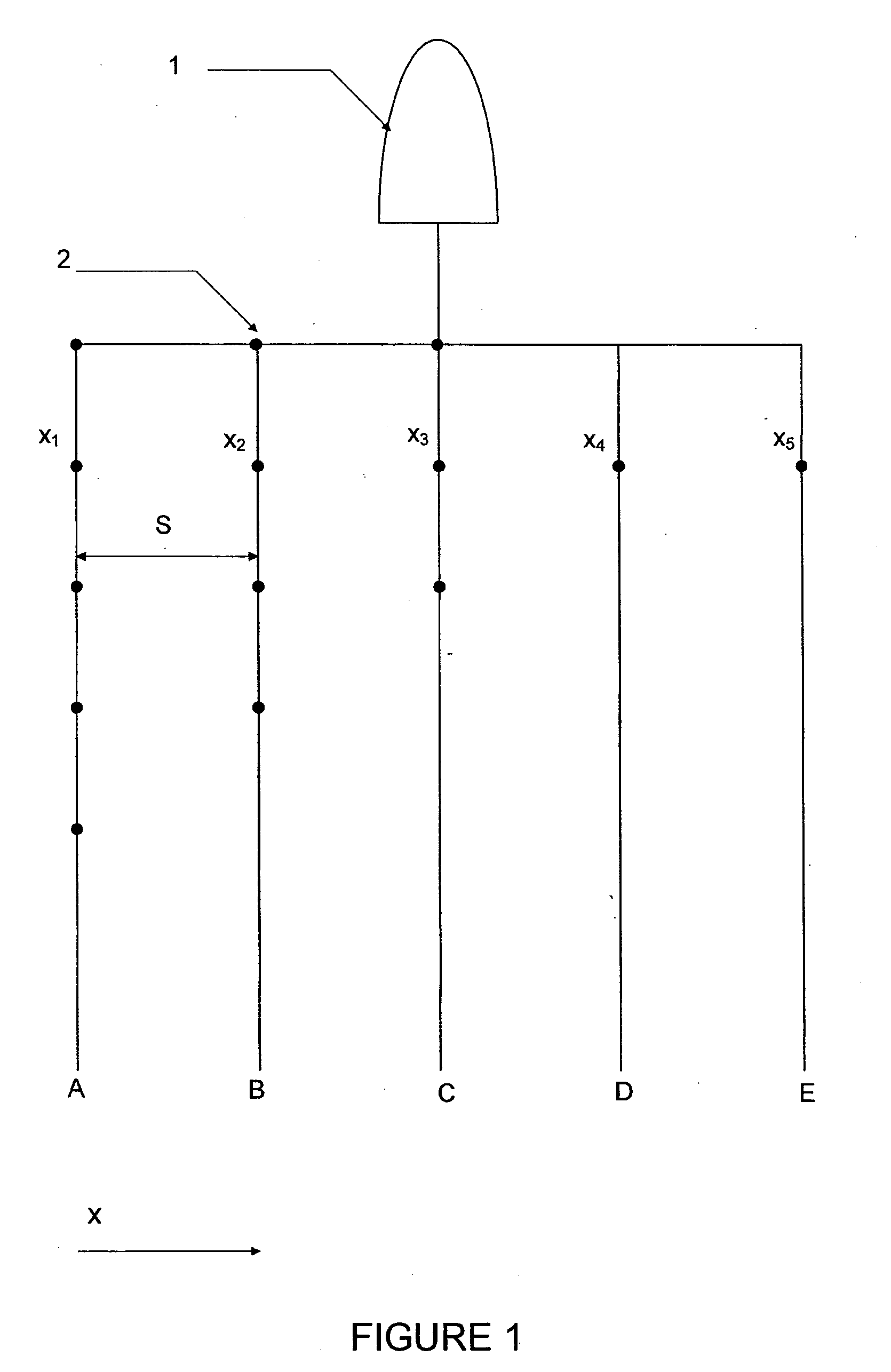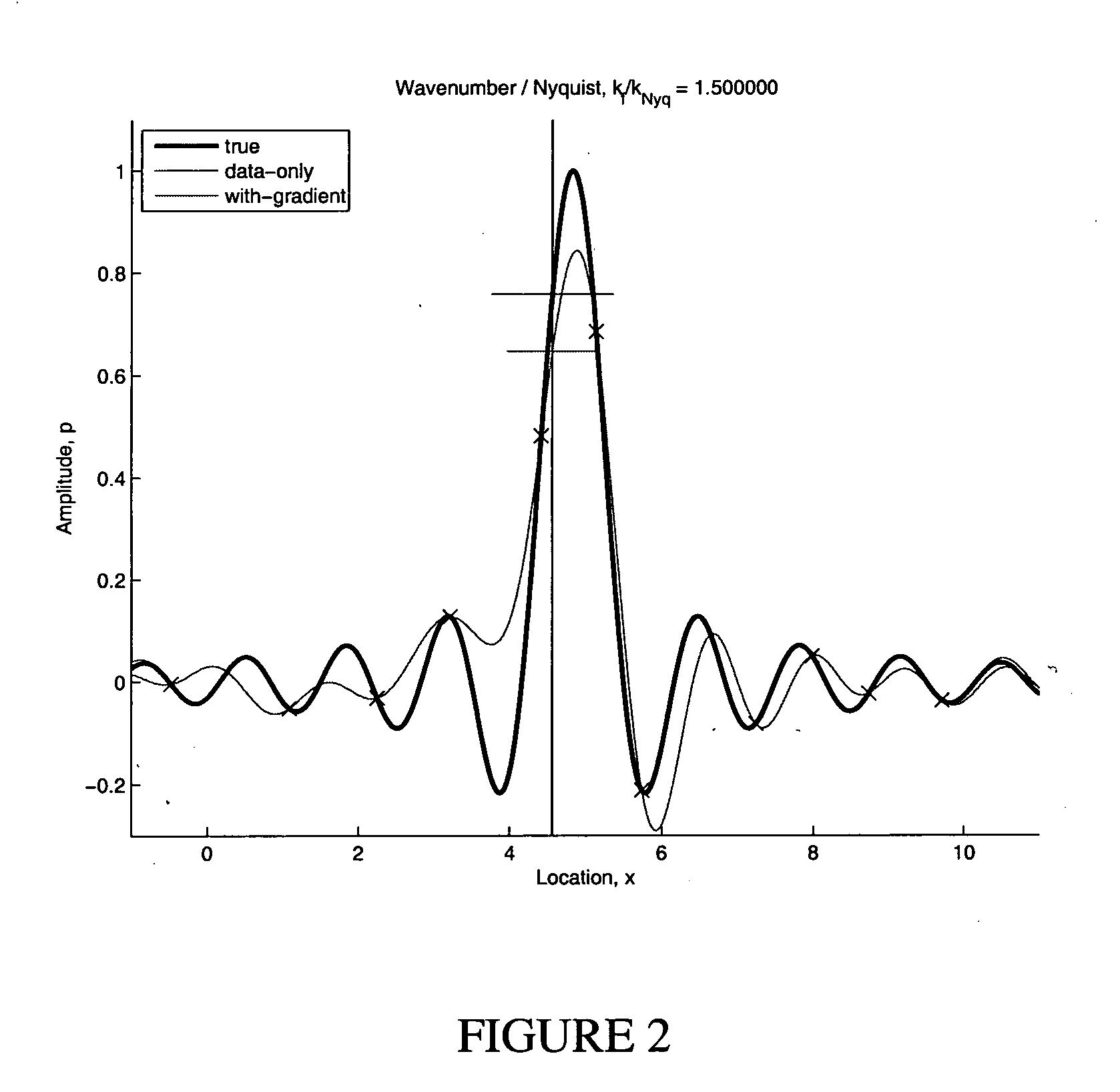Spatial interpolation of irregularly spaced seismic data
a seismic data and spatial interpolation technology, applied in the field of spatial interpolation of seismic data, can solve the problems of missing pressure or gradient values at some locations, and achieve the effects of reducing error functions, increasing noise in pressure data, and reducing errors
- Summary
- Abstract
- Description
- Claims
- Application Information
AI Technical Summary
Benefits of technology
Problems solved by technology
Method used
Image
Examples
Embodiment Construction
[0039]FIG. 1 illustrates a typical layout of an acquisition system for marine seismic data. A plurality of streamers, in this case five streamers A, B, C, D, E are towed behind a boat 1. The typical spacing S between the streamers A, B, C, D, E is 50 to 100 meters although the streamers A, B, C, D, E are only fixed at the end adjacent to the boat and therefore will drift so that spacing S becomes non-uniform, particularly towards the free ends of the streamers A, B, C, D, E. Each streamer A, B, C, D, E has a plurality of sensors 2 equally spaced along the length of the streamer. At each sensor position a hydrophone records pressure changes which correspond to seismic signals from reverberations from a shot fired by a source. At each sensor position xn, at least one sensor records particle velocity or acceleration. There may be multiple velocities / acceleration sensors recording the velocity / acceleration in different directions. In this case, the value of interest is the velocity / acce...
PUM
 Login to View More
Login to View More Abstract
Description
Claims
Application Information
 Login to View More
Login to View More - R&D
- Intellectual Property
- Life Sciences
- Materials
- Tech Scout
- Unparalleled Data Quality
- Higher Quality Content
- 60% Fewer Hallucinations
Browse by: Latest US Patents, China's latest patents, Technical Efficacy Thesaurus, Application Domain, Technology Topic, Popular Technical Reports.
© 2025 PatSnap. All rights reserved.Legal|Privacy policy|Modern Slavery Act Transparency Statement|Sitemap|About US| Contact US: help@patsnap.com



